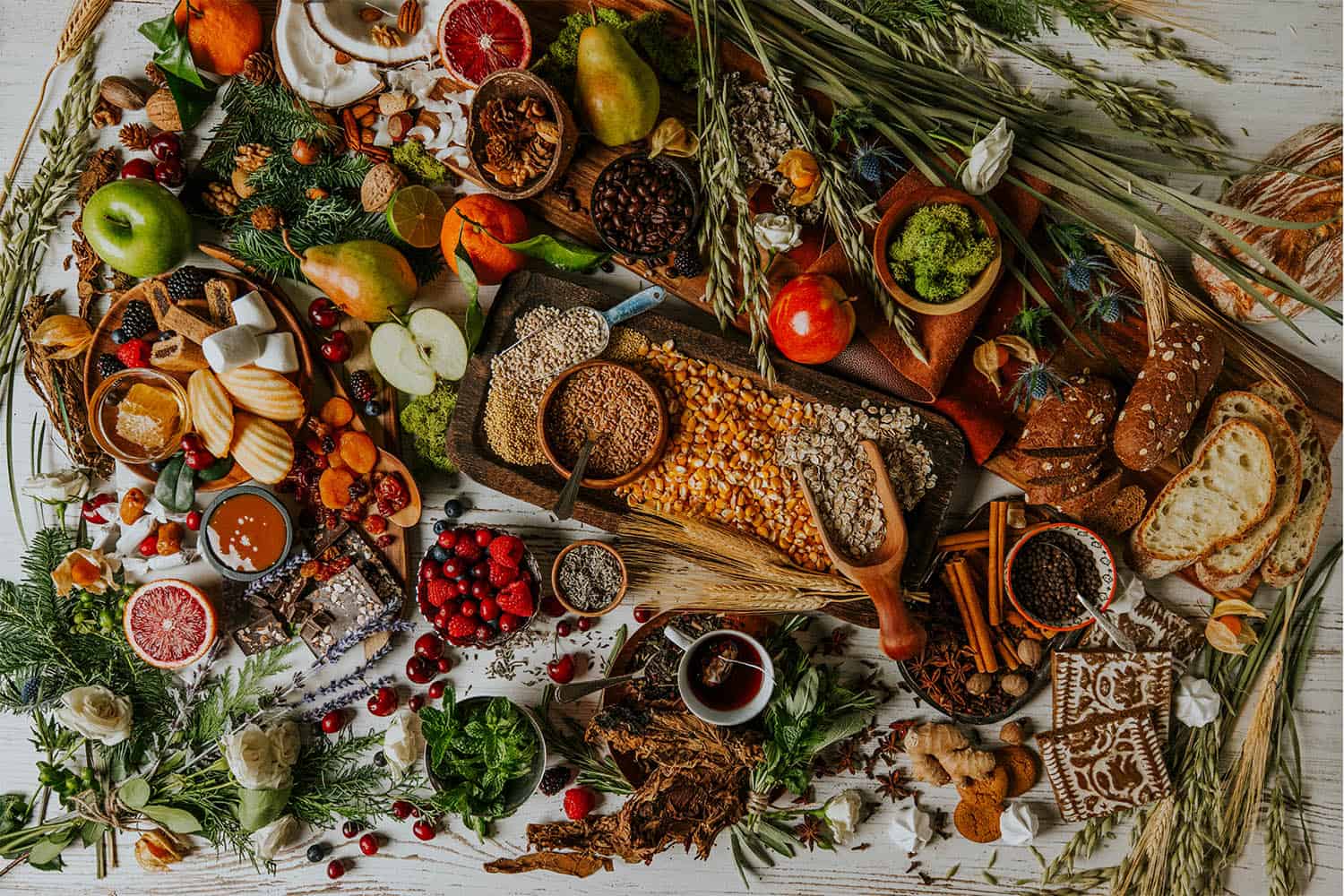
A Master Taster’s Guide To Tasting Kentucky Bourbon
Mentally walk yourself into your kitchen. That’s normally the direction I give someone when they ask me about the how-tos of tasting and identifying flavors in Bourbon.
As a Master Taster, I’ve had many years to hone in on the flavor descriptors of Bourbon and how they tie in to food pairings. But the simple truth is that I also just have a good food memory! We all like to eat, right? We know what an apple tastes like, a banana, a great charred steak, and perhaps even a delicious baked apple pie. Yet, when it comes to describing Bourbon with food flavors, we tend to get lost in the drama of it all. We feel like we must be the smartest person in the room, and we don’t want to be embarrassed by giving the “wrong” answer.
Good news: There is no wrong answer.
One person’s description of peach might be someone else’s apricot. My cinnamon may be another person’s ginger. The differences in how we perceive aromas and flavors are what make our fabulous Bourbon world go round. Every Bourbon has its own unique style and complexities. Discovering them is the art of the Master Distiller and mother nature working their magic on our palates—and in the barrel.
WHERE BOURBON GETS ITS FLAVORS
Several flavor sources contribute to the complexity of Bourbon. Let’s start with the basics:
- GRAINS: Corn adds sweetness, rye adds spice, malted barley adds cereal notes and wheat adds a soft bready component.
- YEAST: Yeast is the soul of Bourbon, bringing a nutty to fruity component.
- BARREL: As the star of the show, the barrel is characterized in many facets of flavor, from savory and woody notes to cherry and vanilla.
Mixing all the components is like creating a big cocktail. The fun of tasting Bourbon is truly in dissecting the flavors and finding where it lands on your palate. In the photo above, you’ll see a myriad of different culinary delights, all of which have levels of intensity and flavors. The best part of tasting Bourbon is learning to discover them all.
BOURBON TASTING 101
Here’s how to approach a very enjoyable tasting.
- Nose the Bourbon first. See what predominant flavors surface when you think of sweet, spicy, earthy, savory or fruity.
- Next, taste the Bourbon. Your olfactory senses may detect different elements than your actual palate. Again, pay attention to the predominant notes that surface. What you notice will be your baseline for food pairing.
- Balance, counterbalance or explosion. Depending on what flavors you detected when tasting, you can decide to either match (balance), go opposite (counterbalance), or elevate a flavor (explosion). For example, if I wanted to balance a marshmallow flavor in Bourbon, I would serve candied yams with marshmallow topping. To counterbalance, I would serve a spiced Bourbon chocolate cocoa with marshmallow on top where the spice tangles up a bit with the sweet overlay of the marshmallow. For explosion, no doubt a s’more to create a surround-sound flavor. Each food group in the photo brings levels of flavor, but let’s look at intensity.
- Pay attention to intensity. Just as weather is always judged by intensity, levels and variations in pattern–the same applies to Bourbon. It’s easy to say that a Bourbon has vanilla or caramel, but the real question is to what level or intensity does the Bourbon have? You don’t need a complicated flavor wheel for choosing. You can just plot your test run of tasting the Bourbon on the intensity chart. Then, you can truly identify how you want to use your balance, counterbalance, and explosion for pairing a full dinner, or appetizer with multiple ingredients.
Fruit is a good example of gauging intensity. For instance, if you taste green apple and note an apple flavor in a Bourbon–is it a golden, green or red delicious? Each has a level of apple flavor intensity. Sugar also has many variations. From pure cane sugar to light, dark brown sugar all the way to rich molasses and sorghum. What intensity is reflected when you taste your Bourbon?
The chart below, from Which Fork Do I Use With My Bourbon, can help you identify intensity:
A QUICK GUIDE TO PERFECT PAIRINGS
Bourbon pairings are all about synergy and harmony, so here are some helpful hints. After completing the intensity chart above, draw a connected circle around the overall profile, as it will fall into, the light/medium or heavy flavor side. Now taste your food selected. Is it heavy, light, or medium? Is your choice to dial up or down?
If it’s a recipe, look at the total ingredients and mark on an intensity chart to identify flavors of those ingredients and do the same with the Bourbon. Soon, you won’t even need the intensity chart, as you will become a pro at recognizing the flavor intensity of all types of food and Bourbon. You are creating your culinary vocabulary just like you created your Bourbon vocabulary in.
Below are some quick hints to categories.
- Types of Bourbon: Depending on the number of courses with your meal, go from a lighter to heavier Bourbon for each course in both texture and proof. You do not want to overpower your guest too soon and deaden their palette.
- Sauces: Red sauces hold up to higher grain flavored Bourbons with nice acidity to cut through. Cream sauces pair well with the medium intensity of a sweet and grainy Bourbon. Too intense smokey and earthy Bourbons can overpower the sauce and become too heavy.
- Dressings/Seasonings: Vinegars, balsamic, marinades and warm spices are best served with sweeter Bourbon profiles to tame the astringency.
- Vegetables: Earthy and herbaceous wood heavy Bourbons give a grilled effect.
- Fruits: Most all Bourbons display fruit notes, so selecting the Bourbon flavor to pair with the exact fruit flavor is ideal but determine if you wish to dial up a faint fruit note or balance a key flavor.
- Cheese: The intensity of cheese will play a role. Example: Goat cheese with a lighter Bourbon such as Maker’s, blue cheese with a heavier Bourbon such as Baker’s.
- Beef: Savory and bold flavors that stand up to the meat.
- Chicken: Earthy and light. Pair with Bourbon that is not too heavy or high proof.
- Seafood: Lighter softer wheated whiskies.
- Spicy: The spices often used in Asian and Hispanic cuisine pair well with heavily sweet Bourbons.
- Sweets: Taste the Bourbon for chocolate notes of milk, or dark along with other descriptors like caramel intensity and brown sugar. This will lead you to the level of sweet food you wish to pair. There truly is a difference to pairing Bourbons with milk and dark chocolate.

About Peggy Noe Stevens
Peggy Noe Stevens is the President of Peggy Noe Stevens & Associates, founder of the Bourbon Women Association, and the first female master Bourbon taster in the world. A lifestyle expert, she is also a professional speaker. As an inductee to the both the Bourbon and Whiskey Halls of Fame, she has planned hundreds of experiences and events globally over the last thirty years, often working with distilleries and master distillers.
To discover more, visit peggynoestevens.com and shop for the book Which Fork Do I Use with My Bourbon, by Peggy Noe Stevens and Susan Reigler.